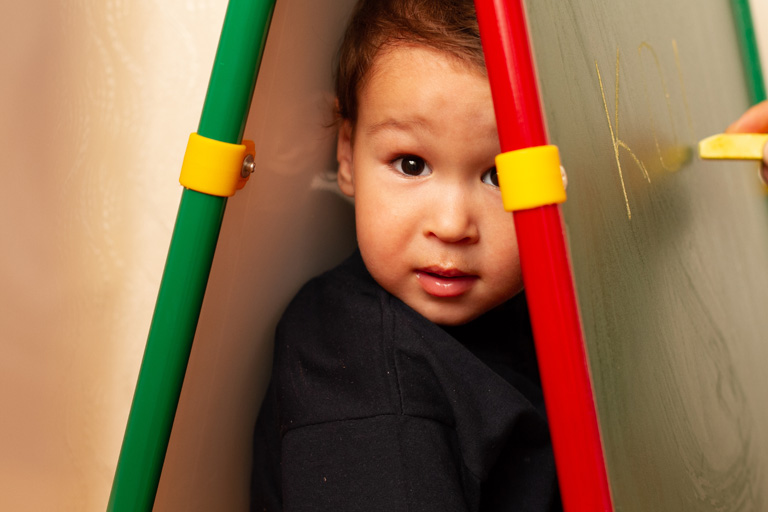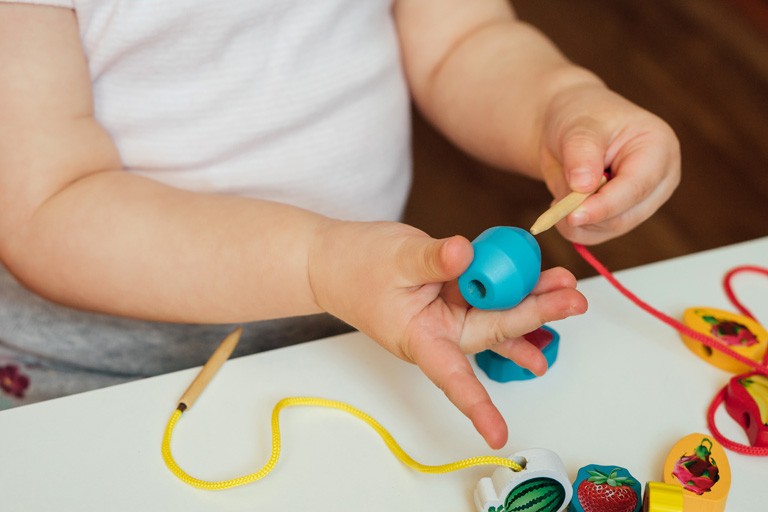
Autism and Speech Therapy
September 13, 2021
Autism and Developmental Therapy
November 22, 2021Autism and Occupational Therapy
Evaluation and Therapy for Daily Activities
What exactly is “Occupational Therapy?” The name sounds like therapeutic aid for on-the-job injuries, but OT actually helps people across a wide range of circumstances to live life to their fullest potential, and occupational therapy can be especially useful for children with developmental delays.
Pediatric occupational therapy helps children with cognitive, physical, and social difficulties to improve their everyday skills, becoming more independent and able to function at their highest level.
How does occupational therapy help with autism? Autism Spectrum Disorder (ASD) is a developmental disability, the signs of which include significant social, communication, and behavioral challenges.
Because many of the problems experienced by children with ASD can be addressed by occupational therapy, OT is often used to help them keep up and improve their basic skills, especially during the critical ages of 0-3 years old.
Research shows that early diagnosis of and interventions for autism are more likely to have major long-term positive effects on symptoms and later skills.
Occupational Therapy and Autism
Pediatric occupational therapy often plays a significant role in helping children with autism improve their daily living skills. Exactly what approaches an occupational therapist may take are geared to the individual child and their specific challenges.
Everyday tasks like eating, bathing, and dressing may seem routine to us, but to children with ASD, these basic tasks can be overwhelming due to the sensory challenges present with autism. By using sensory-integration-based approaches and a variety of related techniques, OTs help children and their caregivers identify challenges and help them to learn new skills.
When it comes to helping your child succeed, the occupational therapist is part of a team that includes the child’s parents, caregivers, and other professionals. How does OT contribute?
- By evaluating your child to see if they can perform tasks generally expected by their age. This could include getting dressed, playing games, eating, and toilet activities.
- Watching your child’s attention span, their ability to learn new activities, and to engage with others.
- Monitoring your child’s responses to touch and other stimuli, as well as assessing motor skill developments like posture, balance, and the ability to manipulate small objects.
How does an occupational therapist help children with autism spectrum disorder? By working with the child to develop coping strategies and to improve skills related to:
- Daily activities like dressing, grooming, brushing teeth, and using the toilet.
- Relationship skills including playing with others, appropriately expressing feelings, and physical awareness like eye contact and attention span.
- Self-regulation, delaying gratification, and focusing on tasks.
- Fine motor development like coloring with crayons, learning to write, and cutting with scissors.
In helping children with autism spectrum disorder, the goal of occupational therapy is to better their quality of life at home, at school, and in the community. Based on each child’s unique developmental level and ability to adapt and improve, the therapist works to help them reach their highest potential.
Occupational Therapy and ABA Therapy
Occupational Therapy is often used in combination with Applied Behavioral Analysis (ABA) therapy.
ABA (Applied Behavioral Analysis) is a science-based technique for behavioral engineering that starts with understanding the basis of behaviors and then rewarding positive behaviors and discouraging negative ones. ABA is used to help children with autism improve their social, communication, and play skills.
Autism is a complex disorder involving difficulty in social interaction, impairment of communication skills, and often the presence of repetitive patterns of behavior.
ABA is used to help children with autism improve their social, communication, and play skills. Positive reinforcement and individualized treatment plans can result in positive and meaningful behavioral change for children with ASD.
ABA Therapy, like Occupational Therapy, is most effective when children begin treatment programs early, between the ages of 0 and 3. Parents choose early intervention therapies because they have been shown to yield benefits both immediate and life-long in areas such as behavior, academic achievement, delinquency and crime, and eventual career attainment.
To learn more about the benefit of Occupational Therapy and ABA Therapy for children diagnosed with Autism Spectrum Disorder, call TEIS Early Intervention at 412-271-8347 or visit our Contact Us page to get help today.
You can also learn more about ABA Therapy in Pittsburgh at the new website for ABA Abilities.


 Send to a friend!
Send to a friend!


